Moods And Emotions In Tagalog: 100 Easy Words
Original blog post: https://ling-app.com/fil/moods-and-emotions-in-tagalog/

Are you interested in using words related to moods and emotions in Tagalog language? Wherever you are in the world, you will always be in a situation where you need to express your nararamdaman(feelings in English) to be understood and treated the way you would like. After all, we are humans, and we technically have it in our DNA to have lots of complex feelings that will go beyond masaya (happy) or malungkot (sad). Luckily there are tons of easy words that you can use for your intense feelings, and this is what we are going to dive deep into today.
Ano ba and iyong tunay na nararamdaman? (What is it that you are feeling right now?)
Just like any other language in the world, Tagalog comes with a range of different words that will surely help you describe your current state. You see, we all have “changing” emotions, and all of these can go on for just split seconds, days, to even months! So, before we discuss all the Tagalog words, let’s first identify the exact differences between emotions, feelings, and moods so that we will know exactly what we are pertaining to and improve our knowledge of emotional literacy.
- Emotion — Also known as emosyon in Tagalog, this feeling is more of a response to a certain trigger. This is the first state you will be at when you are starting to develop a feeling which is why we have the term “emotional state.”
- Feeling — After a few seconds of experiencing a strong emotion associated with something psychological, you will start feeling things in a much larger sense (also known as pakiramdam in Tagalog). You will start feeling the emotions with a physical sensation during this time, causing someone to punch the wall, get weak in the knees, or throw a fit.
- Mood — Also known as kalagayan in Tagalog, this is another common circumstance where the feeling can last for minutes, hours, days, and months. This is basically a mix of emotions and feelings that are a bit challenging to recover from right away, like when you are grieving the death of a loved one or becoming clinically depressed.
Now that we already know the differences between us let us now move forward and give you a full list of all the Tagalog words related to these three below.
8 Primary Emotions

In reality, humans have over 30,000 emotions, and knowing exactly how we feel can significantly help in giving a more precise description. To make things easier, Dr. Plutchik proposed that we first try to understand our feelings by focusing on the eight primary emotions as seen in his popular emotion wheel. Below are the Tagalog translations for each.

Please do note that not all of the common Tagalog words have a traditional-word counterpart. We decided to add this to this list since you might come across some of them when speaking with some old locals, reading some Tagalog literature, or watching movies.
100 Words For Moods And Emotions In Tagalog

In order to sound like a pro and spare yourself from looking at the definition of each in the Tagalog dictionary, we will be listing here all the exact translations for mood, emotions, and feelings. So express yourself with confidence today and understand the culture and language of the Philippines today!
Angry / Annoyed (Expresses Negative Emotions)
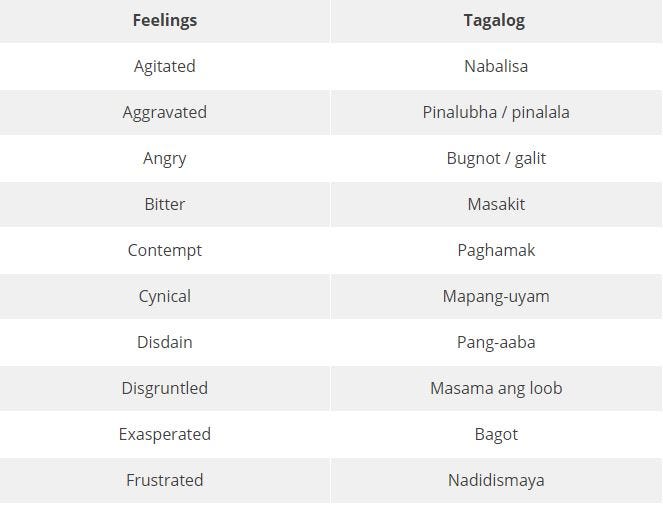
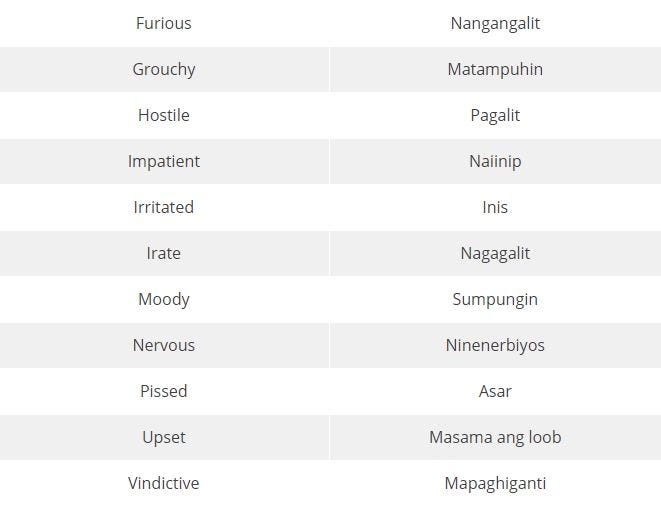
Open (Shows Positive Emotions)
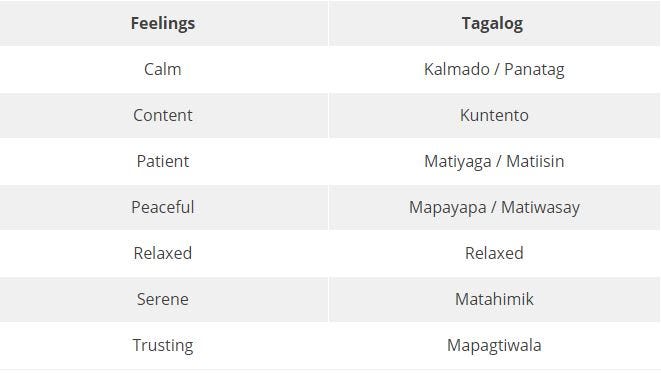
Joy (Expresses Unbounded Happiness)


Despair / Sad (The Feeling Of Not Having Hope)


Shameful / Fearful (Reflects An Uncomfortable Psychological And Physical Sensation)
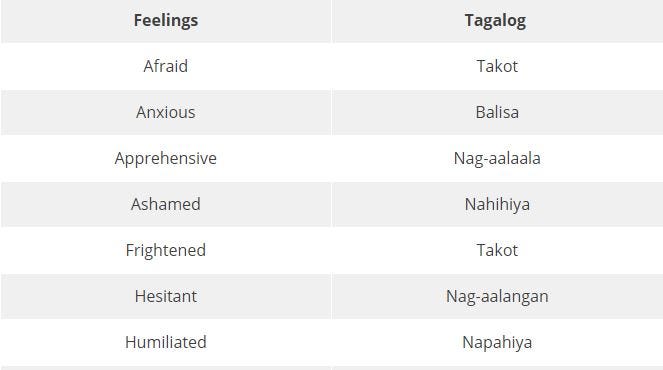

Tensed (Reflects High Levels Of Guilt)
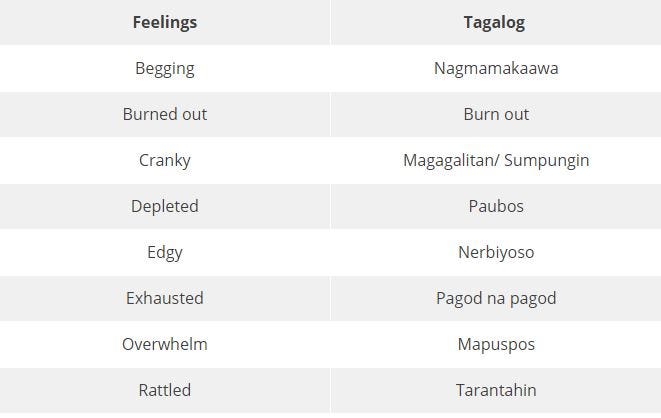

Tender (Shows Warmth, Concern, And Gentle Affection)

As we reach this part of the post, please do note that all of these words can also be associated with certain bodily sensations. For instance, you will instantly feel clammy (Nanlalamig in Tagalog) if you present in front of a big crowd or feel breathless (Humihingal) after a quick jog. To know some of the associated sensations, check the picture down below.
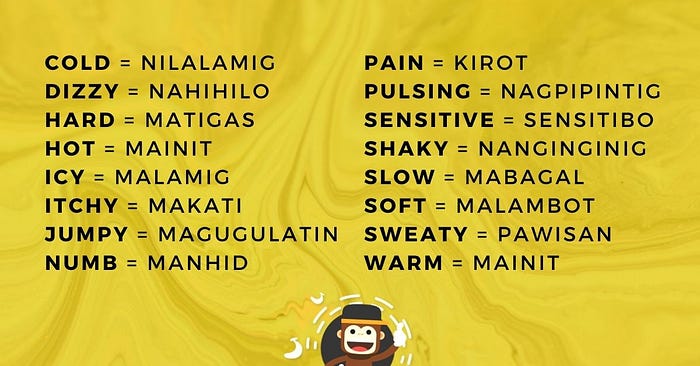
Ready To Learn Tagalog?

As we reach this part of the post, we hope that you could find all the possible translations you will ever need. To expand your vocabulary in this language or in 60+ foreign languages like Spanish and Chinese, we highly recommend that you check out the Ling App.
The Ling App is a FREE language learning application by Simya Solutions guaranteed to help you move from being a beginner to a confident speaker. This is perfect for both language enthusiasts and travelers. It will equip you with all the needed information about the local slang, writing system, and grammatical structure of everyday language. Get to know more about this by downloading it today!
